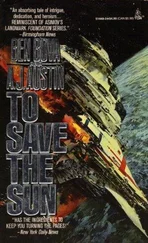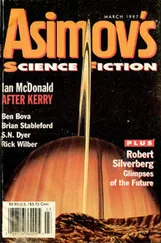“By the way,” she added, “are you folks still interested in a strategic partnership with Astro Corporation?”
Now his face went almost totally blank. Poker-playing time, Pancho realized.
“Yes,” he said at last. “Of course. Although, you realize, with this war going on, the financial situation has changed a good deal.”
“Tell me about it!”
He smiled again.
“Okay, then, we can talk about it when I get to your base.”
“Fine,” said Daniel Jomo Tsavo.
The minor star that humans call the Sun is a seething, restless million-kilometer-wide thermonuclear reactor. Deep in its core, where the temperature exceeds thirty million degrees, intact atoms cannot exist. They are totally ionized, their electrons stripped from their nuclei. Under those immense temperatures and pressures hydrogen nuclei—bare protons—are forced together to create nuclei of helium. This process of fusion releases particles of electromagnetic energy called photons, which make their tortuous way through half a million kilometers of incredibly dense ionized gas, called plasma, toward the Sun’s shining surface.
Furiously boiling, gigantic bubbles of plasma rise and sink again, cooling and reheating, in an endless cycle of convection. Immense magnetic fields play through the plasma, warping it, shredding it into slender glowing filaments longer than the distance between the Earth and its Moon. Vast arches of million-degree plasma form above the solar surface, expanding, hurling themselves into space or pouring back down into the Sun in titanic cascades.
Over cycles of roughly eleven years the Sun’s violence waxes and wanes. During periods of maximum solar activity the Sun’s shining face is blotched with sunspots, slightly cooler regions that look dark compared to the surrounding chromosphere. Solar flares erupt, sudden bursts of energy that can release in a few seconds the equivalent of a hundred million billion tons of exploding TNT: more energy than the entire human race consumes in fifty thousand years.
The electromagnetic radiation from such a flare—visible light, radio waves, ultraviolet and X-rays —reaches the Earth’s vicinity in about eight minutes. This is the warning of danger to come. Close behind, a few minutes or a few hours, comes the first wave of extremely energetic protons and electrons, traveling at velocities close to the speed of light.
The energy in these particles is measured in electron volts. One electron volt is a minuscule bit of energy: It would take five million electron volts to light a fifty-watt lamp. But protons with energies of forty to fifty million electron volts can easily penetrate a quarter-inch of lead, and particles from solar flares with energies of more than fifteen thousand billion electron volts have reached the Earth.
Yet the most violent effects of the solar flare are still to come.
The flare has ejected a gigantic puff of very energetic plasma into interplanetary space. The cloud expands as it moves outward from the Sun, soon growing to dimensions larger than the Earth. When such a cloud hits the Earth’s magnetosphere it rattles the entire geomagnetic field, causing a magnetic storm.
The auroras at Earth’s north and south poles flare dramatically, and the “northern lights” (and southern) are seen far south (and north) of their usual haunts. The ionosphere—the belt of ionized particles some eighty kilometers above Earth’s surface—runs amok, making a shambles of long-range radio transmissions that are normally reflected off its ionized layers.
On the Moon and even out in the Asteroid Belt all surface activity is halted when a solar flare bathes the region in lethal radiation. All spacecraft that operate beyond the Moon carry protective electromagnetic shielding to divert the energetic particles of the flare’s cloud. Otherwise the people in those spacecraft would swiftly die, killed by the invisible bullets of ionizing radiation.
Within a few days the deadly cloud wafts away, dissipates in interplanetary space. Earth’s ionosphere settles down. The auroras stop flaring. Space-suited workers can return to the surface of the Moon and the asteroids. The solar system returns to normal. Until the next solar flare.
Jersey Zorach was a dour, dark, stolid astrophysicist who studied the weather in space. Despite his being a third-generation American, born and raised just outside Chicago, he had never outgrown his Latvian heritage of being burdened with a sense of impending doom.
He sat in his messy little cubbyhole of an office, a squat, untidy man built rather like a fireplug, with a thick thatch of unruly prematurely gray hair flopping down over his forehead, surrounded by beeping display screens, stacks of books, reports, video chips and the scattered remains of many meals he had eaten at his desk.
Since interplanetary space is a nearly perfect vacuum, most people smiled or even laughed when Zorach told them his profession, waiting for a punch line that never came. There was no rain or snow in space, true enough. But Zorach knew there was a wind of ghostly microscopic particles blowing fitfully from the Sun, a solar wind that sometimes reached hurricane velocities and more. There was a constant drizzle of cosmic particles sleeting in from the distant stars as well.
And there were clouds, sometimes. Invisible but quite deadly clouds.
For years he had worked to make precise predictions of solar flares. He studied the Sun until his eyes burned from staring at its seething, roiling image. He made mountains of statistical analyses, trying to learn how to forecast solar flares by matching existing data on earlier flares and making “backcasts” of them. He spun out holographic maps of the interplanetary magnetic field, knowing that those invisible threads of energy steered the radiation clouds that were thrown out by solar flares.
Nothing worked. His predictions were estimates at best. Everyone praised him and the results he was obtaining, but Zorach knew he had yet to predict a single flare. Not one, in all the years he had been working on them.
So he wasn’t surprised when one of the display screens in his cluttered office suddenly pinged. Turning to it, he saw nothing unusual to the unaided eye. But the alphanumerics strung along the bottom of the screen told him clearly that a new solar flare had just erupted.
A big one, he saw. Big and nasty. He knew the automated system was already sending warnings to every human habitat and outpost from Selene to the colony in orbit around distant Saturn. But he pecked at his own phone and called Selene’s safety office to make certain they started bringing everybody in from the surface. It was a point of honor with him. If I can’t predict the bloody storms, he said to himself, at least I can make certain no one is killed by them.
Deep below the Moon’s surface in his private grotto, Martin Humphries had no worries about solar flares or the radiation clouds that accompanied them.
He was ambling slowly through the colorful garden in the patio outside the elaborately carved front door of his mansion, with Victoria Ferrer at his side. The heady aroma of solid beds of roses and peonies filled the air, and he felt victory was close enough almost to touch.
“We’re winning,” Humphries said happily. “We’ve got Astro on the run.”
Ferrer, walking slowly alongside him, nodded her agreement. But she warned, “This latest move of Astro’s could cut off the ore shipments coming in from the Belt.”
Humphries disagreed with a wave of his hand in the air. “Drones attacking our automated freighters? I’m not worried about that.”
“You should be. This could be serious.”
Читать дальше












